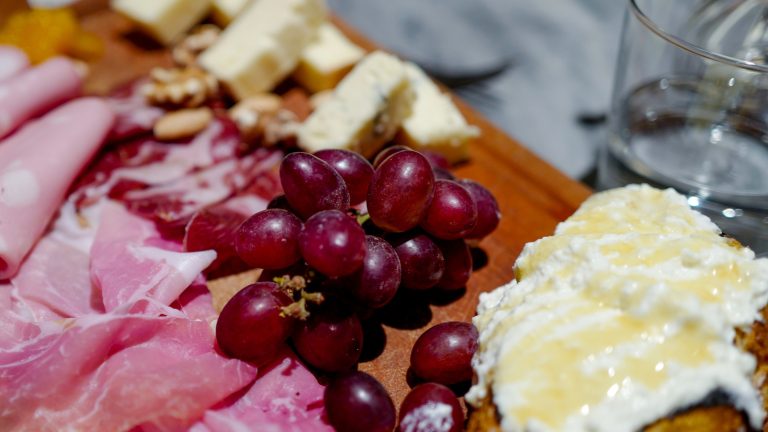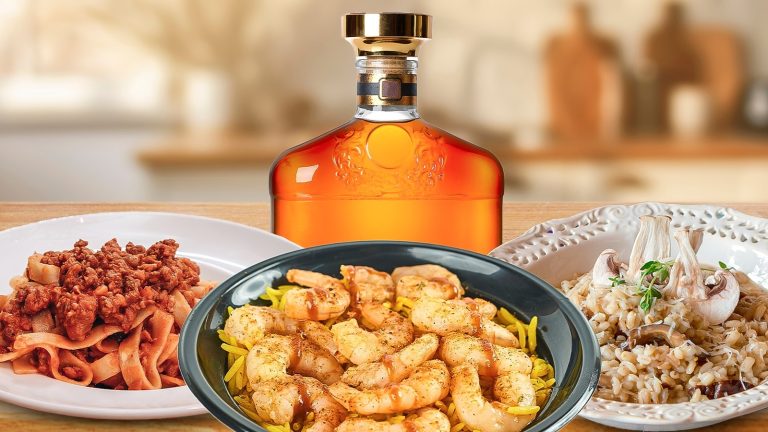During his 88-year life, Pope Francis earned a reputation as a man of the people. Not only did he focus his ministry on uplifting populations often overlooked by those in power –– even having a post office in St. Peter’s Square converted into a free clinic for the homeless and undocumented — he took pains to make himself personally relatable to them. Preferring to live modestly, he settled into a simple Vatican guesthouse rather than the luxurious papal apartment occupied by his predecessors. All this was meant to send a message: For him, the papacy was about service, not power and privilege.
Pope Francis was still, however, a flesh-and-blood human being with very human tastes and preferences. He was a music lover and record collector whose tastes ranged from Mozart to Elvis Presley. And like all humans, he needed to eat. His busy life of international travel not only meant he needed good-quality nutrition, but also gave the world’s cooks plenty of opportunities to try to impress him. And impress him they did – he made no secret of his enjoyment of a good meal. Like the rest of his lifestyle, the foods he enjoyed weren’t fancy, but they were more fun than one might expect for a man with such a serious vision for his life.
Bagna cauda
If you somehow get elected pope but you’re not into Italian cooking, you’re in for a world of pain. The Vatican is, for all but administrative purposes, a part of Rome, and all the produce and dairy cooked in the Vatican’s kitchens is grown and produced at Castel Gandolfo, the pope’s summer home. And while an order of Polish nuns handles most of the cooking at the Vatican, Italian preparations such as pasta dishes feature prominently in their repertoire.
For Argentina-born Pope Francis, the adjustment to local food was easy – his family roots are Italian. Among the local dishes he was known to enjoy was bagna cauda, a punchy sauce of olive oil and butter simmered with powerful doses of anchovies and minced garlic. These flavorful ingredients dissolve in the butter and oil, turning it pungent, salty, and flavorful. It’s used as a dipping sauce and is traditionally kept warm over a burner at the table. There, diners drizzle it over fresh sliced vegetables such as carrots, fennel, and roasted potatoes, along with sliced hard-boiled eggs and hearty slices of bread. It’s simple, unpretentious, and designed to be shared — and thus a tasty reflection of the late pontiff’s values.
Membrillo
While Pope Francis was born and raised in Argentina, his parents were immigrants from Italy, so in a way, his rise to the Vatican was a bit of a homecoming. But his youth in Argentina left an indelible cultural influence on him. While he was devoutly religious even in his youth, he also had a passion for dancing the tango.
Argentina’s distinctive food culture also stayed with him even as he ascended to the papacy. Among the items he enjoyed as part of his breakfast was membrillo, or quince paste. Made from quinces, sugar, and lemon juice, it comes in sliceable blocks and has a texture a bit like very dense gelatin. It’s a bit sweet and a bit tart, and in Argentina, it’s often served with cheese and bread, and can also be incorporated into pastries and other sweet preparations. For many of us, the breakfast table is the one place we don’t want to be surprised, and perhaps Pope Francis found a familiar breakfast from home a comforting way to ease into the busy day ahead.
Empanadas
Pope Francis had the power to ask for anything he wanted for his meals. But one of his favorite dishes was a childhood favorite that kept him close to his Argentine roots: empanadas. While these savory turnovers are made and loved throughout the Spanish-speaking Americas (they were originally created by the Spanish), they can vary widely by region and by cook — even within Argentina, cooks have their own versions of the dish.
Among the hallmarks of Argentine-style empanadas, however, are a flaky crust and a beef filling. Argentina is famous for its beef and its cattle ranching culture, and the country’s celebrated beef makes a hearty and tasty empanada filling. While the pope made no secret of his fondness for empanadas (he cited them as a favorite food in numerous interviews), he shared few details about what his favorite version looked or tasted like. A typical Argentine empanada filling would contain seasoned ground beef sautéed with chopped onions, bell peppers, tomatoes, raisins, and chopped green olives — deeply savory, with just a touch of sweetness.
Steak
While Pope Francis preferred to live simply, simplicity for him did not mean a life of self-deprivation. For instance, among the foods he was known to enjoy was a good sirloin steak – a straightforward pleasure of a meal that was almost certainly easy to come by and easy for his retainers to prepare. And given his rejection of much of the pricy pomp he was officially entitled to, it’s unlikely his fondness for steak would have made a noticeable dent in the Vatican’s budget.
For the pontiff, a good steak was likely another tangible connection to his Argentine roots. Argentina’s large central plains, Las Pampas, are the heart of the country’s cattle industry, and grass-fed beef reigns supreme on Argentine tables – so much so that the average person in Argentina consumes around 50 kilograms of beef per year. Diners in Argentina not only flock to steak restaurants but dedicate their Sundays to lengthy asados (barbecues), where families gather to grill and feast on steak, all washed down with local Malbec wine. It’s unclear if Pope Francis got to enjoy steaks from Argentina at his Vatican dining table, but whatever he got must have been a welcome reminder of home.
Dulce de leche
Popular urban legend states that Pope Francis was an abstemious eater who rejected the pleasures of the table just as he rejected the luxurious lifestyle of his predecessors. But while he did have to watch his diet for medical reasons at various points in his life, he nevertheless enjoyed good food. And as a 2016 cookbook on cooking at the Vatican revealed, Pope Francis had a serious sweet tooth.
Among his favorite sweets was another treat from his homeland, dulce de leche. Literally translated as “milk sweet,” it’s a thick, spreadable, milk-based caramel made by slowly cooking milk and sugar together until thick and deeply caramelized. (Cooks also make it by caramelizing a can of sweetened condensed milk – or even easier, they buy it premade in jars.) In Argentina and elsewhere in Latin America, cooks use it as a filling for cookies and pastries, a spread for toast or waffles, or a topping for ice cream or fruit. In short, it seems to play the same role Nutella plays in European kitchens: it makes any sweet treat even better.
Baked chicken
Most of us learn from personal experience that a diet of treats alone isn’t sustainable. An overload of rich, fatty food can make us tired and groggy, and after a while, it’s just not fun anymore. A balanced diet of healthful but satisfying foods with occasional treats thrown in for fun is a smarter way to go, especially if your busy schedule requires you to stay healthy and alert. Not only will you feel better, but you’ll enjoy everything you eat more.
With Pope Francis’ busy schedule of travel, public speaking, and behind-the-scenes administrative tasks and political wrangling, he no doubt understood the need to watch his health, especially since he was already elderly with a history of serious medical conditions when he ascended to the papacy. At one point, his doctors advised him to cut back on carbs, so he built a diet around light, but nutritious dishes such as simple baked chicken accompanied by local wine. The fact that the chicken was raised on the grounds of his summer home meant it was fresh and local — a far cry from the rubbery chicken so many of us dread.
Salad
Italy’s temperate climate has made it a great place to sample fresh produce in all its forms, and Italian cuisine boasts countless recipes that celebrate its home-grown produce. In Italy, vegetables aren’t just afterthoughts there to fill up space on a plate, as they often are in North America. They’re there to be enjoyed.
Fruits and vegetables were also a regular part of Pope Francis’ daily diet, and an everyday meal he was reported to enjoy was baked chicken accompanied by a salad. This meal in particular seemed to give him an unjustified reputation as a culinary killjoy–– but from what we know about the provenance of the food on his table, even a simple salad at the Vatican would have been worthy of appreciation. Pope Francis promoted sustainability and care for the planet, and his everyday diet reflected these values. All the vegetables in his salads were locally and organically grown, and of course, super fresh. These salads were not only tasty, but quite likely a satisfying reminder to him of the rewards of sustainability.
Gnocchi
In many ways, Vatican City seems like a world apart – a tiny nation-state that consists largely of celibate adults charged with keeping ancient traditions alive. But it’s still very much influenced by the culture of Rome, which literally surrounds it, and the food served at the Vatican is more times than not Italian.
So when Pope Francis sat down for dinner, he almost certainly expected Italian (or at least, Italian-influenced) cuisine. This meant various forms of pasta made regular appearances, and one of these was gnocchi, or dumplings. These can take a number of forms in Italy, ranging from coin-shaped semolina gnocchi from Rome to delicate round ricotta gnocchi from Tuscany. It’s unclear which variety Pope Francis enjoyed at the Vatican, but a likely candidate is gnocchi al Vaticano, or Vatican gnocchi. This dish consists of pan-fried potato-based dumplings tossed with sautéed vegetables and pesto sauce. Depending on the portion size, this could be a flavorful appetizer or a hearty meatless main dish.
Pizza
Another Italian specialty high on Pope Francis’ list of favorites was pizza. And he didn’t just crave the pizza itself, but the humble social interactions associated with it. According to The Catholic Herald, when asked by a Mexican TV station about things he disliked about being pope, he said, “The only thing I would like is to go out one day, without being recognized, and go to a pizzeria for a pizza.” He was so fond of pizza that it seemed to be something of a love language for him. In 2016, he treated 10 homeless people to a day at the beach, topped off by a shared meal at a pizzeria. He also celebrated the canonization of Mother Teresa by treating 1,500 homeless people to a pizza meal at the Vatican.
His fondness for pizza was no secret, either. While the pope was traveling through Naples (which claims to be the birthplace of pizza) in his Popemobile, a local pizzeria owner ran up to him with a personalized pizza –– and the pontiff was more than pleased to accept it.
Eggplant parmigiana
If you have a favorite vacation destination that you visit regularly, you likely have a favorite food memory of the place — perhaps a favorite restaurant, or a regional specialty you can’t find at home. These food memories are special, not just because of the food involved, but because of the sense of place they embody. When you step into that restaurant or taste that special dish, you know you can only be in one place.
And when Pope Francis took his summer breaks at Castel Gandolfo, aka the papal palace, he experienced an especially strong connection to his meals. Virtually all the food he ate at the Vatican was grown on the extensive grounds surrounding Castel Gandolfo, and while he was there, he got to taste the property’s produce and dairy at its very freshest. For instance, among the vegetable-forward dishes he enjoyed was the Italian classic eggplant parmigiana. His connection to the food on his plate could not have been any closer — he very well could have strolled by the eggplant and tomato vines and dairy cattle that provided the vegetables and cheese for his meal.
Ice cream
Pope Francis had a serious sweet tooth, but he balanced his love of sweets with the need for foods that would keep him properly fueled for the demands of his job. When he traveled to the Philippines in 2015, for instance, his office instructed the local chef who would be cooking for them to ensure the food served would be familiar to the pontiff and easily digestible. The chef obliged, creating simple but balanced meals such as chicken with chimichurri (an Argentine herb sauce) and ice cream for dessert.
While Pope Francis appreciated everything he tasted on that trip, it was the ice cream that captured his attention. When he flew back to Rome, he got to enjoy some frosty souvenirs: ice cream in a range of flavors, including pistachio, malted milk, and brown butter almond brittle, provided by the popular Philippine ice cream brand Carmen’s Best Ice Cream. Philippine Airlines, which provided transportation for the pope, had placed the order, but the Carmen’s team didn’t know it was intended for Pope Francis until they made the delivery. “I did soon find out that he loves dulce de leche and I would have made him a dulce de leche ice cream,” Carmen’s ice cream maker, Paco Magsaysay, told the New York Daily News.





